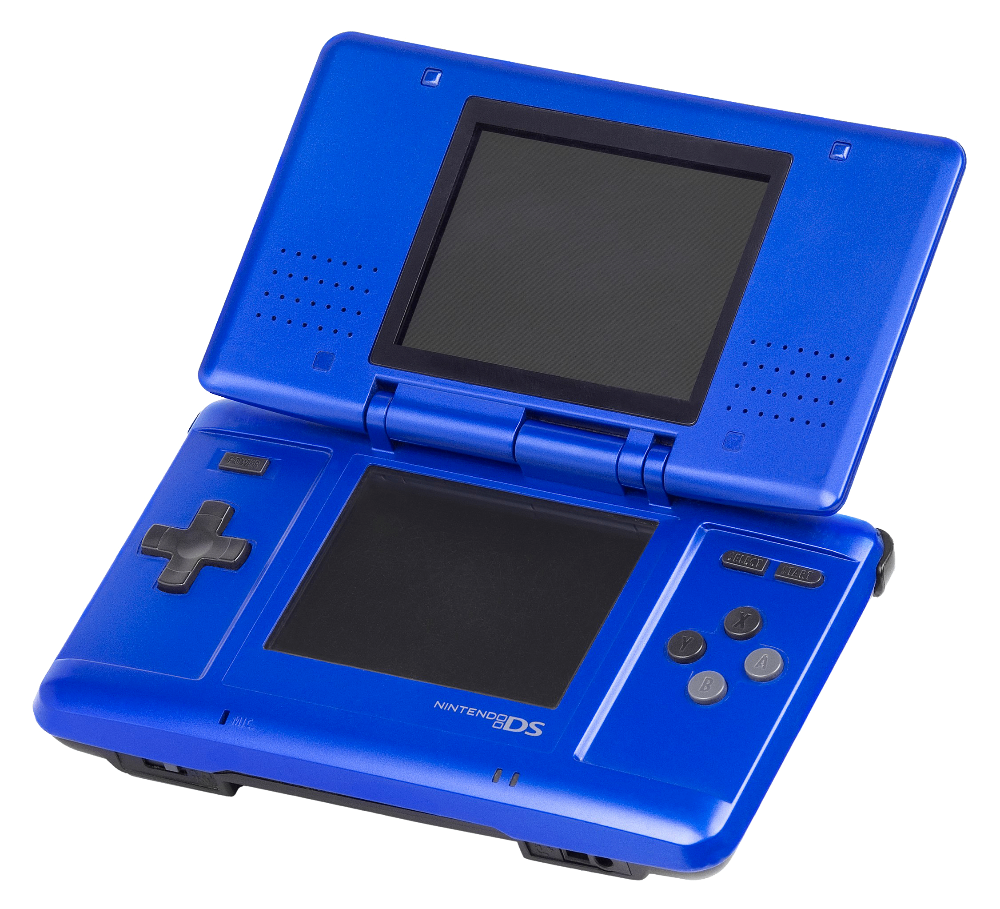
The Nintendo DS is a dual-screen, clamshell-design handheld video game console developed and manufactured by Nintendo. It was first released in North America in 2004 and is distinguished by its twin screens, one of which is a resistive touchscreen. The DS was a commercial juggernaut, selling over 154 million units across its various models, making it Nintendo’s best-selling system of all time.
Innovative features
- Dual screens: The console’s two screens opened up new possibilities for gameplay. Games could use one screen for the main action and the other for a map, inventory, or a different perspective.
- Touchscreen: The DS featured a lower touchscreen that could be controlled with an included stylus or a fingertip. This touch interface allowed for new and intuitive control schemes for puzzles, drawing games, and menus.
- Built-in microphone: The microphone was used in many games for voice commands, in-game communication, or minigames that required blowing or shouting.
- Wireless connectivity: The DS had built-in Wi-Fi, which enabled local multiplayer gaming and online play through the Nintendo Wi-Fi Connection service.
Hardware and specifications
- Backwards compatibility: The original DS and DS Lite models had a second slot for Game Boy Advance cartridges, allowing users to play their GBA game library on the new system.
- Game media: Games came on small, thin cartridges called DS Game Cards.
- Audio: Built-in stereo speakers offered virtual surround sound, which was a first for a Nintendo handheld.
- CPU and memory: The DS was powered by two ARM processors and had 4 MB of RAM.
Market and legacy
When it was first introduced, Nintendo marketed the DS as an experimental “third pillar” alongside the GameCube and Game Boy Advance. However, its massive success quickly established it as the true successor to the Game Boy family.
The DS’s success is attributed to several key factors:
- Expanded audience: The intuitive touchscreen and popular “brain training” games attracted a new casual audience of non-gamers.
- Iconic game library: The console was home to a massive and popular library of games, including New Super Mario Bros., Nintendogs, Mario Kart DS, and Pokémon Diamond and Pearl.
- Successor: The Nintendo DS line was succeeded by the Nintendo 3DS in 2011, which added glasses-free 3D to the dual-screen experience.
- Discontinuation: The DS line was eventually discontinued in 2013, with online services ending in 2014.
